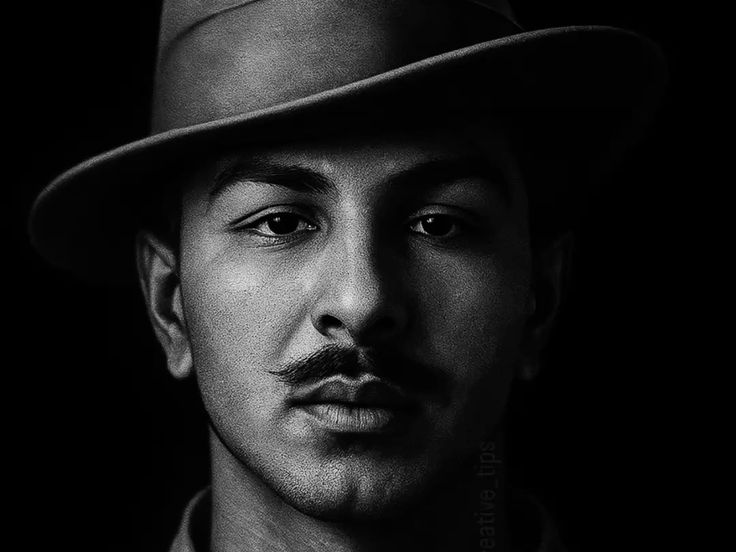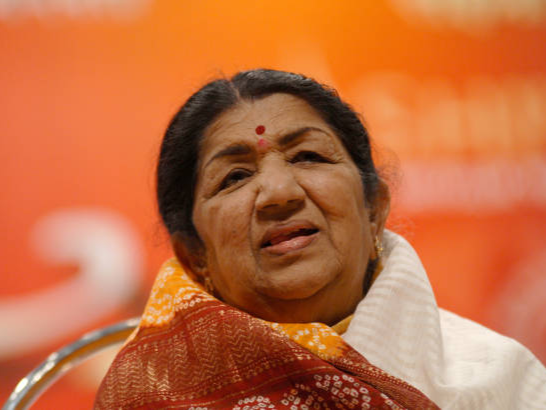Look, I get it. You’re probably reading this because someone shared a WhatsApp forward with Bhagat Singh’s photo on Martyrs’ Day or maybe you’re procrastinating on that assignment that’s due tomorrow. Either way, welcome. Grab your overpriced coffee (because apparently, filter kaapi isn’t cool anymore), and let’s talk about a guy who achieved more before turning 24 than most of us will accomplish in our entire Netflix binging, Instagram scrolling lifetimes.
Biography time, folks. But not the boring, textbook kind that made you sleep through history class. This is about Bhagat Singh the dude who literally said “screw you” to the British Empire, became an atheist when everyone around him was praying to seventeen different gods, and got himself hanged before he could even rent a car in most countries. Yeah, that Bhagat Singh.
Wait, Who Was This Guy Again? (A Crash Course for the Historically Illiterate)
Born on September 27, 1907 (some say 28th, because apparently even his birth certificate had commitment issues), Bhagat Singh entered the world in Banga village, Punjab now in Pakistan, because Partition had to complicate everything. His family? Oh, they weren’t your average “beta, engineer ban ja” types. Nope. His dad Kishan Singh and uncles Ajit Singh and Swaran Singh were already on the British government’s naughty list for being part of the Ghadar Movement.
So basically, while you inherited your mom’s nose and your dad’s tendency to dadbjoke, Bhagat Singh inherited full-blown revolutionary genes. The bar was set ridiculously high from day one.
His childhood was like a origin story for a superhero, except this superhero didn’t have a fancy cape or billion dollar tech. At age 12, this kid went to Jallianwala Bagh right after the 1919 massacre and collected soil soaked with the blood of innocent Indians killed by General Dyer. At. Age. Twelve.
What were you doing at twelve? Probably trying to figure out if that crush noticed you during lunch break. Different priorities, I guess.
The Education of a Revolutionary (Spoiler: He Actually Read Books)
Here’s the thing about Bhagat Singh that blows my mind dude was an actual intellectual. Not the “I read on book and now I’m woke” kind you see flooding LinkedIn with motivational quotes. I’m talking about someone who read over 550 books by age 23. FIVE. HUNDRED. AND. FIFTY.
Meanwhile, the last book you finished was probably a menu at that new cafe.
He studied at DAV College and then National College in Lahore (founded by Lala Lajpat Rai). But unlike most of us who go to college to “find ourselves” (translation: party and make questionable life choices), Bhagat Singh actually used his time to, you know, learn stuff. Radical concept.
He devoured works by Karl Marx, Lenin, Bakunin and other revolutionary thinkers. His reading list included philosophy, economics, politics and anarchism. He even wrote articles for revolutionary magazines like Kirti. At 18 to 20 years old.
Compare that to your college years. Yeah. Uncomfortable, isn’t it?
The Revolutionary Career: From Student Politics to “Britain’s Most Wanted”
Naujawan Bharat Sabha: The OG Youth Movement
In 1926, at the ripe old age of 19, Bhagat Singh founded the Naujawan Bharat Sabha (Youth Society of India). Before you existed as a demographic for marketing teams to exploit, Bhagat Singh understood that young people were the key to revolution.
The Sabha’s goals? Oh, nothing too ambitious just complete independence, socialism, ending communalism, mobilizing workers and peasants and basically restructuring society. You know, small stuff. The kind of goals that make your New Year’s resolution of “going to the gym more” look absolutely pathetic.
The organization held lectures, organized protests, and spread revolutionary ideas. They were anti religion (in politics, at least), anti caste and pro equality. Bhagat Singh insisted that every member sign a pledge putting country above community. This was during a time when Hindu Muslim riots were tearing Punjab apart and he was out here preaching unity based on rationalism instead of religious tokenism.
The absolute audacity. And it worked. Thousands joined.
The Lala Lajpat Rai Incident: When Things Got Personal
In 1928, the British sent the Simon Commission to India basically a bunch of white dudes deciding India’s future with zero Indian representation. Classic colonialism. Lala Lajpat Rai, a beloved nationalist leader, led protests against it. The Superintendent of Police, James Scott, ordered a lathi charge cops beating protesters with sticks.
Lala Lajpat Rai died from his injuries two weeks later.
Bhagat Singh and his comrades in the Hindustan Socialist Republican Association (HSRA) decided: revenge time. Their plan? Assassinate James Scott. The execution? Well they accidentally shot John Saunders, a junior police officer, in a case of mistaken identity.
Oops.
But here’s the thing they didn’t run and hide. Bhagat Singh and Rajguru put up posters all over Lahore declaring they’d avenged Lajpat Rai. Then they went underground. Because even revolutionary heroes need to avoid getting arrested before Act II of their biography.
The Assembly Bombing: Making the Deaf Hear
April 8, 1929. Bhagat Singh and Batukeshwar Dutt walked into the Central Legislative Assembly in Delhi like they owned the place. They threw two bombs into the hall (which were deliberately designed NOT to kill anyone revolutionary, not terrorist, get it right). Then they threw pamphlets, shouted “Inquilab Zindabad!” (Long Live the Revolution!), and just stood there.
They didn’t try to escape. They wanted to get arrested. Why? Because they needed a platform. A stage. The courtroom became their TED Talk venue, except with actual stakes.
Their stated aim: “To make the deaf hear”. The British government was pushing through repressive laws, and Bhagat Singh wanted to force everyone to pay attention.
And boy, did it work. Newspapers went crazy. His face was everywhere. He became more popular than even Gandhi for a while.
Imagine trending before Twitter even existed. That’s power.
Prison Life: Where Legends Are Actually Made
The Hunger Strike That Shook an Empire
So Bhagat Singh is in jail, right? Most people would be like, “Well, this sucks, let me just wait for my trial.” Not this guy. He looked around, saw that Indian political prisoners were being treated worse than British criminals, and said, “Nah, unacceptable”.
On June 15, 1929, Bhagat Singh and his comrades started a hunger strike. Their demands?
- Be treated as political prisoners, not common criminals
- Same standard of food as European prisoners
- No forced labor
- Access to books and newspapers
- Better living conditions
Reasonable stuff, honestly. Basic human dignity. But the British were like, “How dare you ask for rights?”
The strike lasted 116 days for Bhagat Singh. One hundred and sixteen days of basically starving yourself while still showing up to court hearings, writing documents and staying politically active. Jatin Das, one of the strikers, died after 63 days.
His death caused outrage across India. Even Gandhi, who had his issues with Bhagat Singh’s methods, condemned the treatment of prisoners.
The British eventually gave in to some demands. Handcuffed prisoners had defeated the world’s most powerful empire through sheer willpower. From behind bars.
And you complain when your food delivery is 10 minutes late.
“Why I Am An Atheist”: The Essay That Still Slaps
While in prison, waiting to be hanged, Bhagat Singh wrote one of the most powerful essays ever penned in India: “Why I Am An Atheist”.
Someone had accused him of being an atheist because of vanity and ego. His response? A detailed, logical, philosophical smackdown explaining exactly why he didn’t believe in God.
He wasn’t raised atheist. His family were religious Arya Samajis. He used to pray for hours as a kid. But through reading, thinking, and questioning, he came to reject the idea of an omnipotent deity who apparently created a world full of suffering and injustice.
His logic was brutal: If God exists and is all-powerful and all good, why does evil exist? Why do children starve? Why do innocent people suffer? Either God is powerless (not much of a god then), or doesn’t care (not worth worshipping), or doesn’t exist.
He wrote this knowing he would die soon. Most people in that situation grab onto religion for comfort. Bhagat Singh doubled down on reason instead.
The sheer intellectual courage. At 23.
The Trial and Execution: How to Die Like a Legend
The trial for the murder of John Saunders was a farce. The British set up a Special Tribunal, denied the accused proper defense rights and rushed through the proceedings. It was basically “we’ve decided you’re guilty, now let’s make it look legal.”
Bhagat Singh, Rajguru and Sukhdev were sentenced to death. The execution was scheduled for March 24, 1931, but the British, being the cowards they were, moved it up by 11 hours to March 23. They were terrified of public outcry.
Gandhi tried to negotiate (half heartedly, according to some sources). There were massive protests. But the British were determined.
On the evening of March 23, 1931, Bhagat Singh, Rajguru, and Sukhdev walked to the gallows. They were singing. Not crying, not begging singing. Revolutionary songs about freedom.
Bhagat Singh was 23 years old. Rajguru was 23. Sukhdev was 24.
After hanging them, the British panicked about what to do with the bodies. So they secretly cut them into pieces, stuffed them in sacks, and threw the ashes into the Sutlej river. Because apparently, they were scared even of corpses.
Think about that. The most powerful empire in the world was terrified of three young men’s dead bodies.
The Legacy: Why Your Feed is Full of His Quotes
Here’s the uncomfortable truth: Bhagat Singh’s vision of India hasn’t been realized.
He didn’t just want political freedom from the British. He wanted socialist revolution a society where workers and peasants had power, where wealth wasn’t concentrated in the hands of a few, where caste and communalism were destroyed.
He famously said that replacing British rulers with Indian rulers wouldn’t solve anything if the exploitation continued. He was right. But nobody wants to talk about that part.
Today, political parties across the spectrum claim his legacy. The irony is not lost. The atheist revolutionary is invoked by religious nationalists. The socialist is praised by capitalists. The anti exploitation crusader is used in photo ops by the very people perpetuating inequality.
But his influence on youth remains undeniable. Every student protest, every hunger strike, every demand for justice echoes his methods. “Inquilab Zindabad” is still shouted at demonstrations. His writings on atheism, socialism, and revolution are still read (by some of us, at least).
Universities in Nepal, Bangladesh, and Sri Lanka have seen youth movements inspired by his ideas. Because turns out, the fight against corruption, unemployment and authoritarianism is pretty universal.
The Uncomfortable Questions He Leaves Behind
Bhagat Singh asked questions that still make people uncomfortable:
- Why do we accept that some people live in luxury while others starve?
- Why do we let religion divide us?
- Why do we worship leaders instead of questioning them?
- What does freedom mean if it’s only for the elite?
His answer to all of this: Revolution. Not just with bombs and guns, but with ideas, education, and mass mobilization.
He wrote: “The sword of revolution is sharpened on the whetting stone of ideas”. Violence was only a last resort. Real change comes from awakening people’s consciousness.
Heavy stuff for someone who wasn’t old enough to have a quarter life crisis.
The Writings: What He Left Behind (Besides Inspiration)
Biography accounts often skip this, but Bhagat Singh was a prolific writer. Between revolutionary activities, jail time and eventually dying, he managed to produce essays, articles, and letters that reveal a deeply intellectual mind.
Some highlights:
- “Why I Am An Atheist” (1930): Philosophical essay on rationalism vs. religious belief
- Articles on socialism and communism for Kirti magazine
- Prison diaries discussing everything from economics to literature
- Letters to friends and family explaining his ideology
He advocated for:
- Women’s rights (rare for his time)
- Dalit equality and the destruction of caste system
- Workers’ and peasants’ rights
- Secular governance
- Scientific temper and rational thinking
All of this at an age when most of us are still figuring out how to do taxes.
So, What’s the Point of All This?
You’ve made it this far (congrats on that attention span, rare these days). So let me get real for a second.
The point isn’t to idolize Bhagat Singh so much that he becomes another historical figure we put on currency and forget about. The point is to actually think about what he stood for.
He wasn’t perfect. The mistaken killing of John Saunders was, well, a massive screw up. His methods were controversial then and would be now. But his core ideas equality, justice, rationalism, questioning authority those don’t have an expiration date.
Bhagat Singh’s biography is uncomfortable because it holds up a mirror. He did more in 23 years than most people do in 80. Not because he was superhuman, but because he cared enough to act. To read. To organize. To risk everything.
Meanwhile, we like and share posts about injustice, maybe sign an online petition if we’re feeling particularly motivated, and call it activism. He threw bombs at the government. Just slightly different energy levels.
And before you say “well, times were different” were they though? Unemployment is still crushing youth. Inequality is still massive. Communalism is still tearing communities apart. The issues he fought against are still here; they’ve just changed costumes.
The question his life poses: What are you willing to sacrifice for what you believe in? Not in a dramatic “let me get hanged” way (please don’t), but in everyday choices. Will you speak up when it’s uncomfortable? Will you educate yourself beyond viral Instagram infographics? Will you organize instead of just criticize?
Or will you just use his quotes in your Instagram story on Martyrs’ Day and call it a day?
Final Thoughts: The Revolutionary You Won’t Become (Probably)
Look, I’m not here to guilt-trip you into becoming the next Bhagat Singh. That ship has sailed for most of us the moment we chose comfort over conviction (no judgment, comfort is nice).
But his biography should at least make us think. About what we’re doing with our lives. About what we stand for, if anything. About whether we’re just consuming content, products, ideologies or actually creating change.
Bhagat Singh believed that the youth would lead India’s transformation. He formed the Naujawan Bharat Sabha specifically because he knew young people had the energy and courage to challenge the status quo.
Today’s youth have organized incredible movements in Nepal, Bangladesh, Sri Lanka and yes, even in India. Students still protest. Workers still strike. People still demand justice. The spirit isn’t dead.
But it’s also competing with a million distractions. With algorithms designed to keep you scrolling. With systems designed to make you feel powerless. With cynicism disguised as sophistication.
Bhagat Singh’s life is a reminder that one person, especially one young person, can matter. Can make waves. Can change narratives. Not alone he always emphasized collective action but as part of a movement.
So, what now? Maybe start by actually reading his writings instead of just quoting him. Maybe question the systems you’re part of. Maybe organize around issues you care about, even in small ways. Maybe stop waiting for someone else to be the revolutionary.
Or don’t. Keep scrolling. Keep consuming. Keep complaining without acting.
Bhagat Singh didn’t die so you could be politically informed and personally inactive. Just saying.
Conclusion
Alright, you made it. You read (or skimmed, let’s be honest) over 3000 words about a guy who’s been dead for 94 years. I’m actually impressed. Or you’re really procrastinating on something important. Both valid.
Bhagat Singh’s life was short, intense and fundamentally about believing that change is possible if you’re willing to work for it. His biography isn’t just history it’s a challenge. A question directed at each generation: What will you do with your one wild, precious, meme filled life?
He chose revolution. You might choose something different. But at least make it a conscious choice, not the default path of least resistance.
And maybe, just maybe, the next time you post his quote on social media, take a second to reflect on whether you’re living anything remotely close to those values. Because Bhagat Singh didn’t fight for your Instagram aesthetic. He fought for a world where everyone could live with dignity, equality and freedom.
Now go do something that would make that caffeinated, book reading, bomb throwing, 23 year old revolutionary at least slightly proud.
Or don’t. I’m not your mom.










1 thought on “Bhagat Singh Biography: The Brave Freedom Fighter Who Inspired Millions”